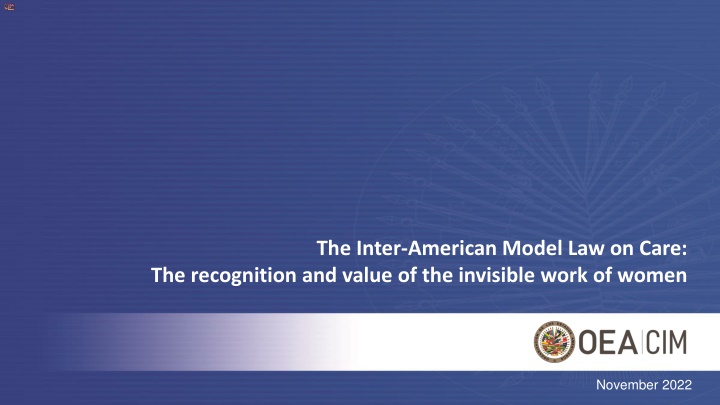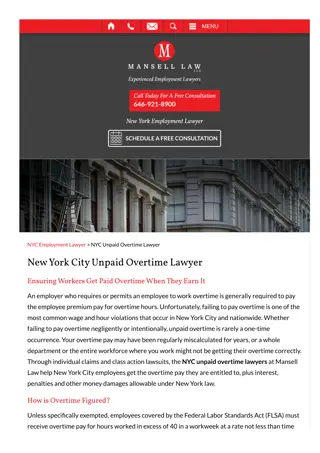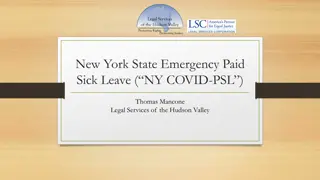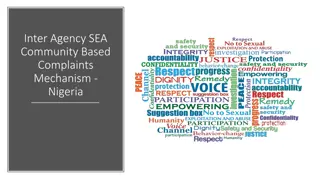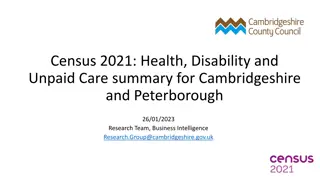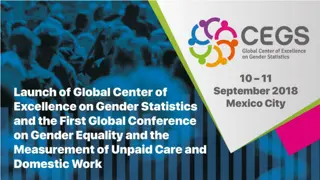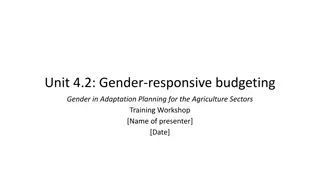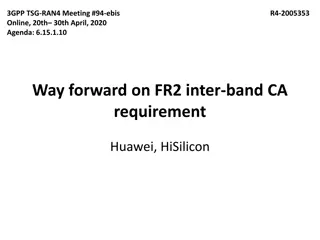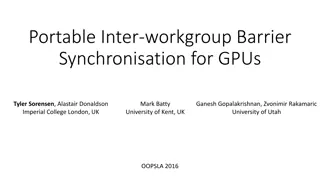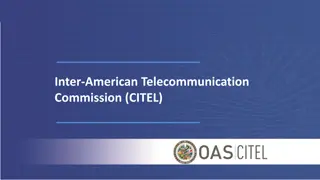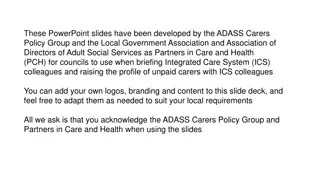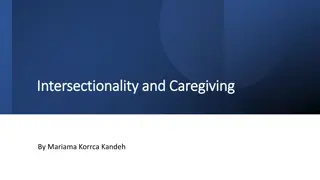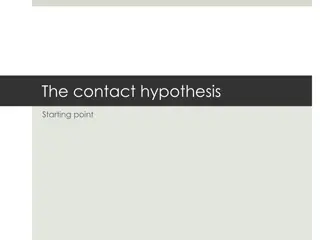Recognizing Unpaid Care Work: Inter-American Model Law on Care
The Inter-American Model Law on Care aims to bring visibility and value to the invisible work of women, particularly in caregiving roles. The law seeks to regulate care, redistribute it, recognize unpaid care work as work, and ensure universal access to the right to care. By addressing the structural barriers faced by women, such as precarious working conditions and economic inequality, this model law strives to promote gender equality and women's empowerment in the region.
Download Presentation

Please find below an Image/Link to download the presentation.
The content on the website is provided AS IS for your information and personal use only. It may not be sold, licensed, or shared on other websites without obtaining consent from the author.If you encounter any issues during the download, it is possible that the publisher has removed the file from their server.
You are allowed to download the files provided on this website for personal or commercial use, subject to the condition that they are used lawfully. All files are the property of their respective owners.
The content on the website is provided AS IS for your information and personal use only. It may not be sold, licensed, or shared on other websites without obtaining consent from the author.
E N D
Presentation Transcript
The Inter-American Model Law on Care: The recognition and value of the invisible work of women November 2022
Situation of women: Context in the region Reduction in employment rates for women sexual division of labor Care = Precariousness of their working conditions Women predominantly do care work Structural barrier to the economic empowerment of women Setback of an equivalent of 18 years in their labor participation Perpetuate cycle of poverty and dependency
Inter-American Model Law on Care Purpose of the law Model: Regulate care, its redistribution, provision and promotion, recognition of unpaid care work as work, the recognition and universal guarantee of all people to access and enjoyment of the right to care Caregiving at the center of the agenda requires a new ethic and a new social covenant, which implies redefining this activity in order to make it visible, value it, account for it and redistribute it. The route is realized through changes in economic, cultural and legal structures, which is why today we present this Inter- American Model Law as a concrete tool for this wonderful transformation." Alejandra MoraBlackberry, Secretaryexecutiveof the CIM/OAS (March 8, 2022)
Why a Law? Because the existing instruments have been insufficient in addressing the realities of women in a comprehensive manner: gaps persist in the full exercise of rights and that discrimination against women is still rooted in inequalities and structural inequities between men and women in the countries of the region. Legal norms are an expression of a society at a given historical moment and represent the demands of important sectors of the citizenry. Advance in regulatory changes as part of a permanent and urgent demand for women's rights at the level of the structures that make up state power and delimit the obligations and powers of the State towards its citizens. The interpretation and application of the norm constitutes the institutional mechanism by which formal equality materializes in a substantive equality.
Inter-American Model Law on Care Recover the balance between men and women, by recognizing the historical contribution of women to unpaid care work and the effects that this has had on their development opportunities and full enjoyment of their rights. Promote gender equality, women s labor force participation, their access to decent work and their economic empowerment, and establishing the link between the guarantee of the full enjoyment of their rights, sustainable economic development and social well-being. Premises of the Model Law (5Rs): Recognition care as a right, and recognition of care work as work Reduction and Redistribution social co-responsibility of care Remuneration/retribution value care work and give it remuneration and compensation through social security systems Representation take into account the needs of people who need care and who carry out care work.
Need for new gender convenants Care It is a transformation towards a new ethic: taking them out of the private world and moving them into the public sphere Motivation for the Model Law This means a great rupture of the classical paradigms, which implies... Recognizing the importance of care at the level of people's needs (interdependence) Recovering the balance for the sustainability of life financial sustainability Influencing and transforming the sexual segmentation of work
Conceptual Framework for the adoption of a Care Law: Why a care law? Article 3 of CEDAW: establishes the mandate to States to take all appropriate measures, even of a legislative nature, to ensure the full development and advancement of women, in order to guarantee the exercise and enjoyment of human rights and fundamental freedoms on equal terms with men. It presents innovative features: Introduces new legal-political construction, by putting forward concepts that respond to feminist theory - the human being as a free, equal, vulnerable, interdependent and co-responsible being Establishes criteria for technical compliance Establishes regulations that enshrine effectiveness criteria Aims for cultural transformation: Propose and position normative changes as part of a permanent and urgent vindication of women's rights at the level of the structures that make up state power. Its systematic application constitutes a determining factor for social change based on the recognition and respect for the human rights of women.
To what extent does the Model Law contribute to establish and guarantee the right to care? Being law, it makes the State guarantor of the fulfillment of this right, with criteria of mandatory compliance and effectiveness. establishes a system, with specific governance, for the fulfillment of this right (National Care System Chapter V). Proposes concrete actions and responsibilities for the State to protect the right to Care (Chapter VI Care and global value chains) Article 50. Caregiver State. The State must ensure that public bodies and institutions, and the companies they own or control, comply with the principles of co-responsibility for caregiving and promote the adoption of these policies with their counterparts. Proposes concrete actions and responsibilities for the private sector to protect the right to Care (Chapter VI Care and global value chains) Article 53.Duty to protect. Employers must abstain from violating the right to care and instead implement the co- responsibility and job flexibility measures specified in Chapter IV of this law.
Transformation agenda synthesized in 5R and 3 additional topics 5 critical knots RECOGNITION 1. The right of the people to be cared for. 2. Pillar in the social protection system: universality within the framework of progressivity. GOVERNANCE REDISTRIBUTION AND REDUCTION 3. Family and social co-resposibility REMUNERATION AND RETRIBUTION 4. Care: basis of the economic system and a key instrument of economic recovery. PROMOTION 5. care as cross-cutting axis in the framework of governance. REPRESENTATION ECONOMIC DIMENSION
General structure of the Model Law Definition of care Recognition and guarantee of universal right to care: care and be cared for Situation of dependency, with respect for the dignity of people and promoting their autonomy Unpaid care work as work Historical contribution of women to unpaid care work Recognition and assessment of care in national accounts care as an integral part of the welfare state: 4th pillar of the social protection and essential service system RECOGNITION
General structure of the Model Law State and local governments: Care services and infrastructure/ guarantor and promoter Private Sector: REDUCTION AND REDISTRIBUTION Familyand work balance Flexibility Permits and leave Promotion of co-responsibility in men Creation of services and infrastructure within the framework of partnerships Social co-responsibility of care and building alliances Community and organized civil society: Associations and networks Men: Co-responsibility within families
General structure of the Model Law Labor regime in harmony with care needs: Services and infrastructure of the state and companies. Unpaid care economy: Affirmative actions in public policies and social security Financial investment in care such as social investment, gradual and progressive creation of public-private partnerships REMUNERATION / RETRIBUTION
General structure of the Model Law Persons in situation of dependency Universal access to services, benefits, programs and benefits of the National Care System. REMUNERATION / REMUNERATION Caregivers Employment opportunities and decent work (with equality and without discrimination). Time off, reduction of the burden of care work. Time for personal development. Progressive access to the social security system, to compensate for unpaid care work performed and guarantee access to decent and sufficient old-age pensions. Protection against all forms of violence or harassment due to care work. UNPAID CARE WORK: RIGHTS
General structure of the Model Law The need for representation of the voice of the persons that need care and those that provide care. PRESENTATION To be heard and participate in the consultation and participation mechanisms established by the SNC, in order to contribute to the improvement of its quality and coverage.
General structure of the Model Law National Care System: with structure, competence and assignment of specific responsibilities State coordination as a mandate: inter-institutional and sectoral coordination Importance of differentiated roles among public institutions Effectiveness as a mandate Establishment of public-private partnerships GOVERNANCE
Implementation Guide for Inter-American Model Law on Care Highest standards in the matter Practices in the region review of the regulations and experiences of the countries that are already advancing actions It serves as a reference for countries seeking to make progress on the issue of care, establishing minimum bases in terms of regulatory and policy changes. It illustrates advances and experiences of European countries.
Beatriz Pieres CIM Specialist and Coordinator of the Inter- American Model Law on Care bpineres@oas.org http://www.oas.org/cim Twitter:@CIMOEA
